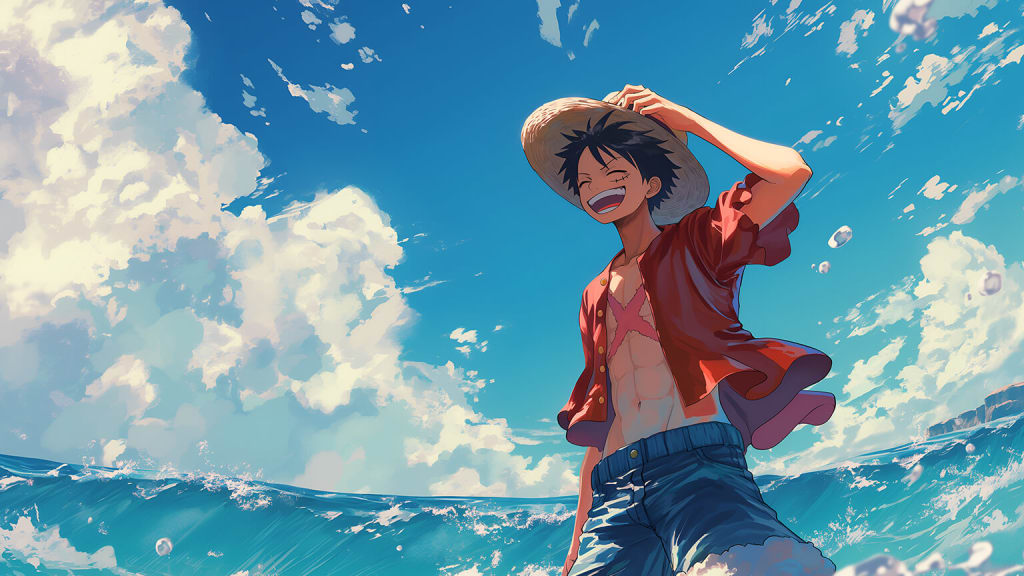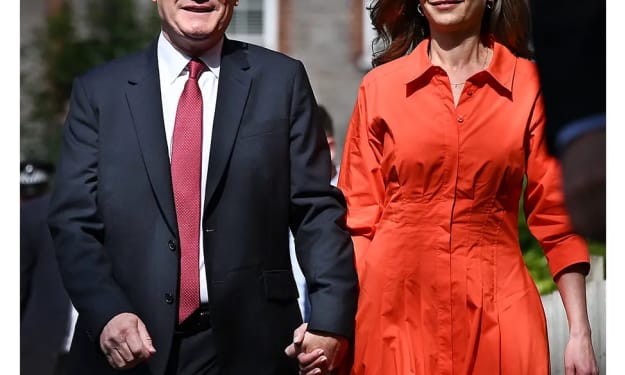Content warning
This story may contain sensitive material or discuss topics that some readers may find distressing. Reader discretion is advised. The views and opinions expressed in this story are those of the author and do not necessarily reflect the official policy or position of Vocal.
One Piece and Killing the Bad Guys
How To Kill Your Enemies' Dreams, Part 1

I’ve hit, at this juncture, a point of political disillusionment of late. Running the risk of becoming too political for this platform, I will simply say that I am exhausted in the face of numerous regressive policies and incidents being parroted and enacted by the opposite side of the aisle from me. The codified manifesto which the other side proudly displays as the guiding principle for if they ever gain power again—a more likely future than I would like to admit—hangs like a specter over the future that I perceive, threatens the way of life of myself and everyone I know and care about. And I can’t help but think, how do we fix this? Sometimes in my heart of hearts, I think it would be better if the “bad guys” were removed from the equation entirely after their decisive defeat at the ballot box, but that’s not how a healthy democracy works. Sometimes, I wish we could send the wannabe fascists to the actual fascist nation waging war in Europe, wipe the dirt from our hands, start anew. But that’s not how things work.
I turn to the adage, “If you eliminate the bad guys, you become just as bad as the bad guys,” and that adage frustrates me to no end. Sometimes the bad guys need to go. Sometimes, the only choice you can make, when your way of life and the superstructure of world peace is under assault, is to eliminate the bad guys. After all, World War II would not have ended without a significant amount of retaliatory violence against the aggressors, and Ukraine would not be free right now were it not for their population’s brave defense of the nation in the face of an invading army. But in a nation where the war is political, not overtly violent (except in the case of the Incident on the Feast of Fools), there is no playbook for a lasting victory.
I turn often to my comfort manga One Piece. It’s no secret that I love One Piece, and I have a lot to say about it all the time, but right now, I want to focus on one aspect of it that series author Eiichiro Oda baked into it from the very beginning: Luffy, the protagonist, does not kill the arc antagonist. In the framework of the adage, of becoming just as bad as the bad guy, Luffy simply does not, and on the surface, perhaps that is toothless. After all, among Luffy’s enemies in the very first saga are the military dictator of a small island, a vicious murder-clown, a savage former pirate, the leader of a pirate army who uses chemical weapons, and the violent oppressor of Luffy’s friend’s home village. Surely, in the grand scheme of justice, some of these scallywags deserve to die. But Luffy is not the arbiter of that justice.
In an early Q&A section in the One Piece manga, Oda informs a reader that Luffy does not kill largely in reverence to Oda’s anti-violence grandmother (if memory serves). Decisively, though, Oda makes a point that the wounds Luffy inflicts upon his enemies are even more painful than death: Luffy’s victories do not stem from the death of the enemy, but rather the death of the enemy’s dreams and ambitions. The earliest arcs provide a perfect scale model of this: In Shells Town, Luffy shatters Captain Morgan’s illusions of grandeur and brings his small-scale dictatorship crashing down. In Orange Town, Luffy liberates the civilian population from the grasp of Buggy the Clown, literally cuts Buggy down a few notches, and removes from him any sort of sense of agency or power he had in the oppression of the residents of Orange Town. Luffy stops Kuro from enjoying a peaceful life of ill-begotten wealth, and blocks Don Krieg from rebuilding his Pirate Armada and wreaking further havoc on Luffy’s friends and comrades. Finally, in defeating Arlong, Luffy dismantles the dreams the Fish Man has in sowing the seeds for Fish Man domination in the East Blue. These systems Luffy dismantles were often years—decades, even—in the making, and by incidentally destroying them so as to help his friends, Luffy shatters the morale of his enemies, leaving them dreamless, ambitionless shells of their former selves.
I have not yet cracked the code for how to dismantle the very system that enables the “baddies” in their quest for world domination. I do not know how to definitively shatter their dreams, or at least set them back a lifetime. Real life is not so cut-and-dry as One Piece—but One Piece is not so cut-and-dry as one would believe. In this series of meandering polemics spawned from memory, I will break down how fascism, totalitarianism, and pure evil are defeated in One Piece; I will discuss the role of the antagonist, what they symbolize, and what happens even after their total defeat. I consider One Piece to be revolutionary literature; it is a manifesto for freedom, and I would like to decode it.
About the Creator
Steven Christopher McKnight
Disillusioned twenty-something, future ghost of a drowned hobo, cryptid prowling abandoned operahouses, theatre scholar, prosewright, playwright, aiming to never work again.
Venmo me @MickTheKnight
Enjoyed the story? Support the Creator.
Subscribe for free to receive all their stories in your feed. You could also pledge your support or give them a one-off tip, letting them know you appreciate their work.






Comments (1)
In my opinion, it starts on social media. Despite the fact that it's "not real" in the grand scheme of things, many of their ideas were disseminated through radicalizing algorithms. I've done what I can to undercut their schemes by blocking creators that show up on my feed and clicking the "..." at the bottom of the screen on Instagram and selecting "not interested"--> "don't suggest posts from (account name)" to decrease the frequency that the post is suggested to others.